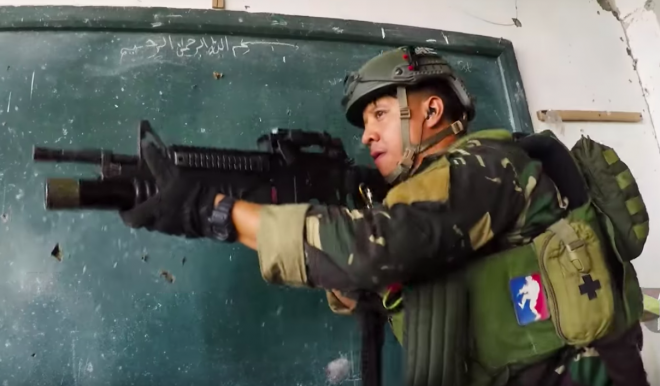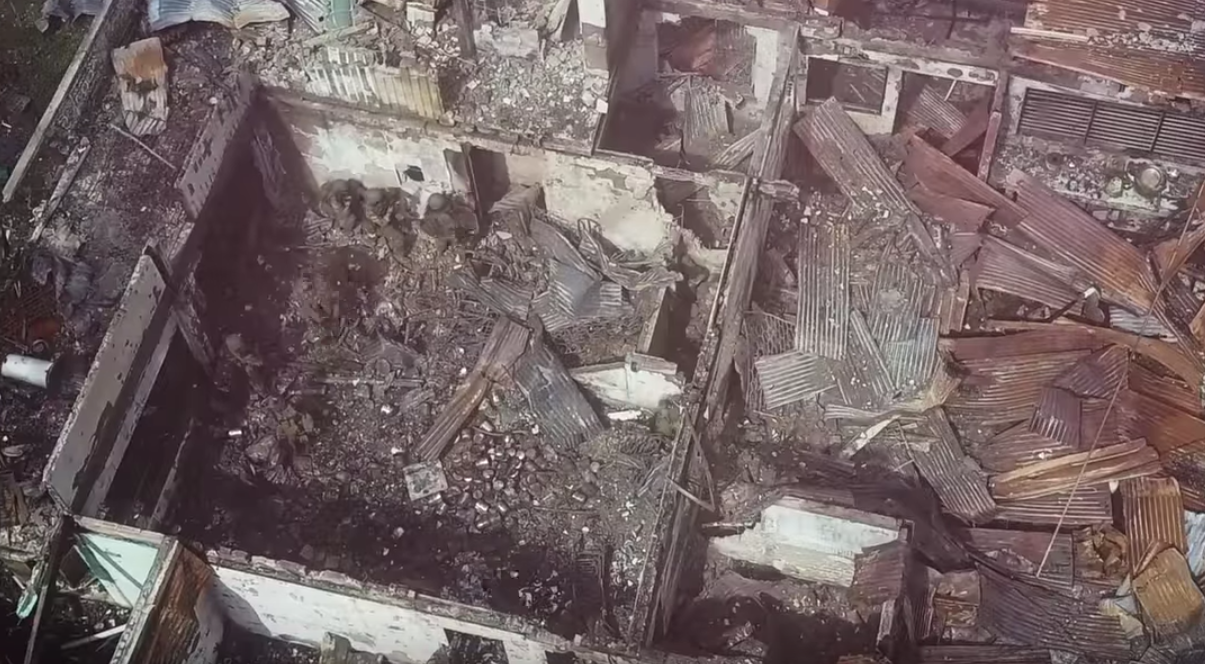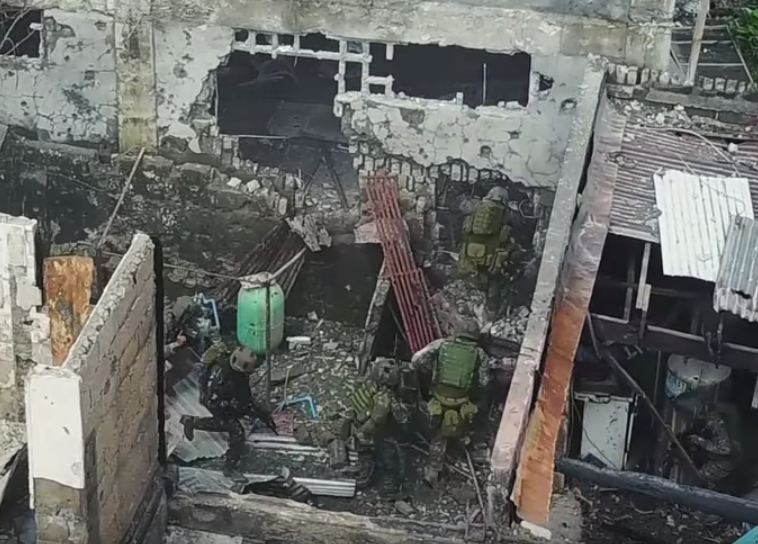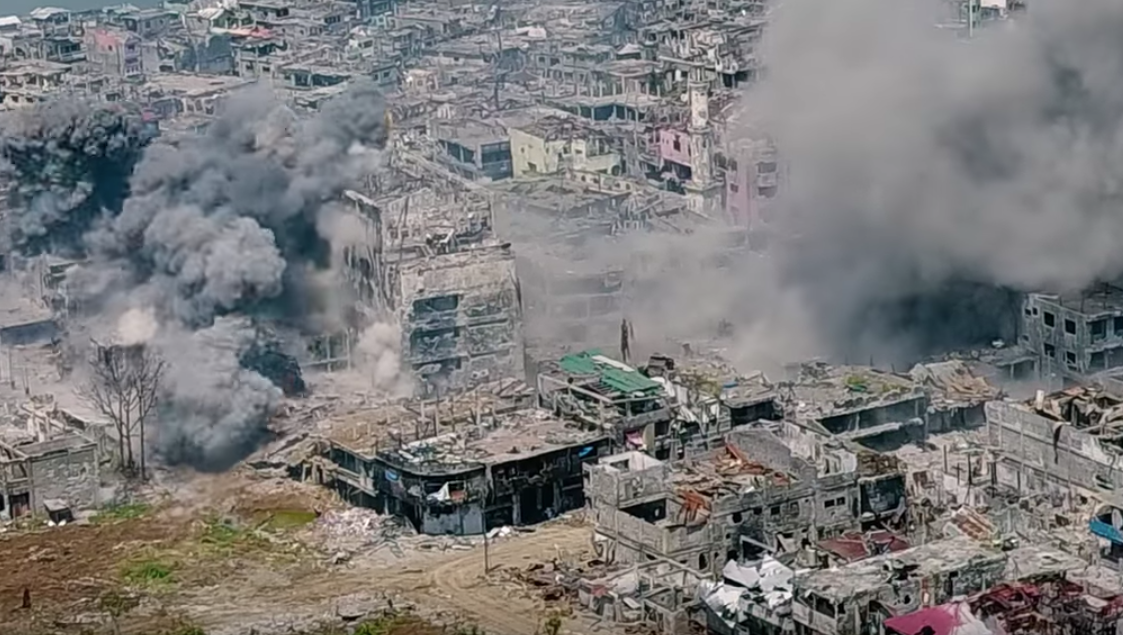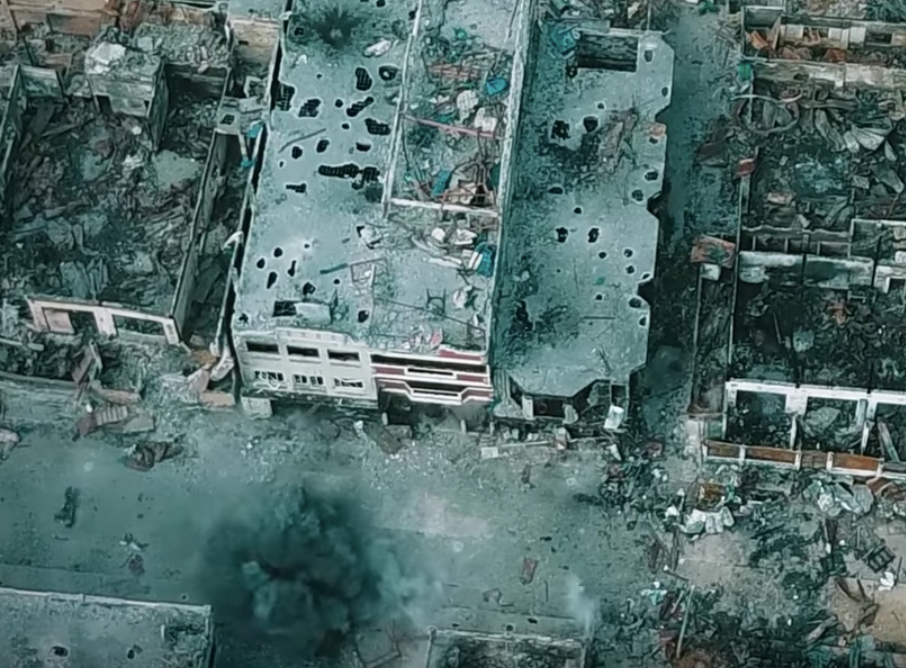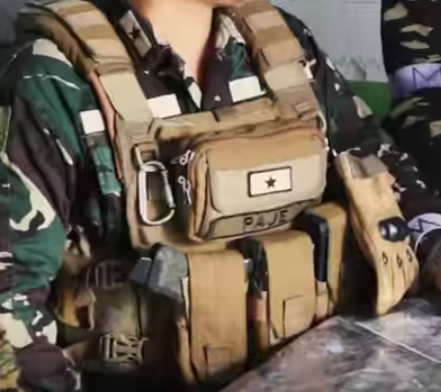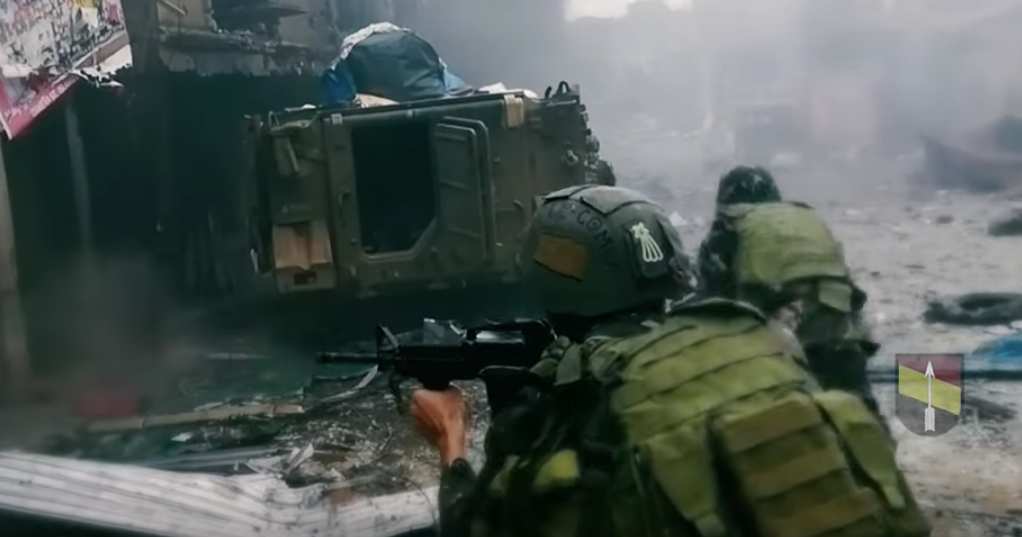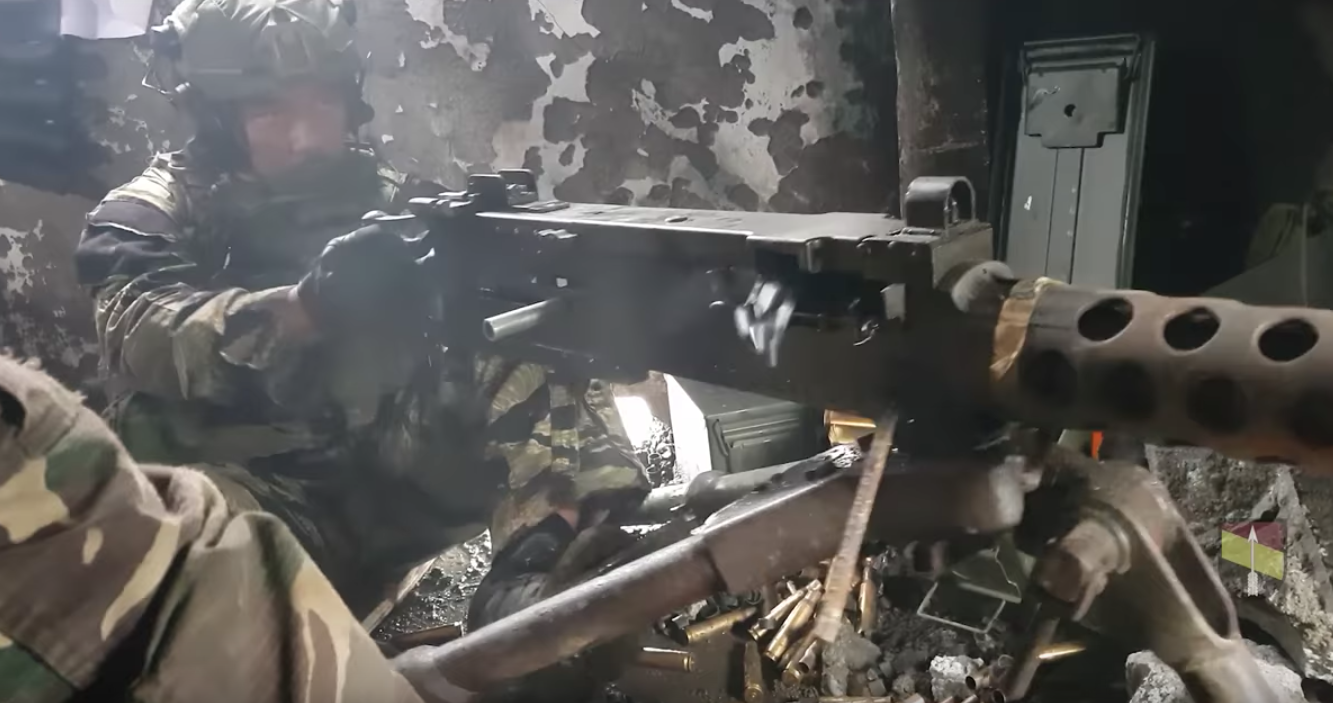In what some analysts are claiming as some of the most vicious urban combat in Southeast Asia since the end of hostilities in Vietnam, the Marawi campaign earned an infamous spot in Military and Filipino history. We covered the battle whenever major news breaks came through in regards to small arms development, such as the terrorist armament or even countries donating small arms to the Philippines on TFB. Recently the Filipino Special Operations Command released a video highlighting the fighting in the campaign through helmet cameras worn by Filipino soldiers and overhead drones. The video is shared here, and I highly encourage readers to watch through it. Similar to the developments in Syria, I think it is important to take in some of the lessons of the fighting for future conflicts. Things like drones, anti-material rifles, suicide bombers, and IEDs will become much more prevalent in upcoming conflicts.
Fortunately, it appears that the drone advantage was to the Filipino side and not the insurgent side of the battle. Unlike in Syria where the so-called Islamic State was using commercial drones to drop improvised mortar rounds and guide suicide bombers into targets, the Maute Group didn’t seem to grasp the tactical advantage of drones against a conventional force. Instead, the Filipino forces appeared to use drones to their own advantage, to guide assaulting troops around obstacles, and even direct artillery strikes.
This officer had what appeared to be a Glock 19 tucked into his rightmost magazine pouch. Notice the extended magazine.
This tactic was interesting. It involved soldiers laying down fire into uncleared alleyways or locations while crossing danger areas. This is routinely seen throughout the video, at multiple points. In terms of U.S. infantry doctrine, laying down fire into an unknown area without a known or suspected enemy presence is highly frowned upon, and if anything is seen as a waste of precious ammunition.
The use of .50 BMG M2 Heavy Machine Guns was also very noteworthy. It appeared that the Filipino forces were using the heavier .50 BMG rounds to punch through concrete and other objects used as cover by the Maute Group in the city. Being man-portable, it could be carried in pieces upstairs and to other vantage points that the 30mm guns on the APCs obviously could not be. If anything, this use reinforces the observation that anti-material caliber rounds (.50 BMG, 12.7x108mm) are here to stay at the squad or platoon level either in a precision rifle or anti-material capacity.
For more footage of the Marawi campaign, be sure to give these videos on Youtube a look too-
 Your Privacy Choices
Your Privacy Choices
